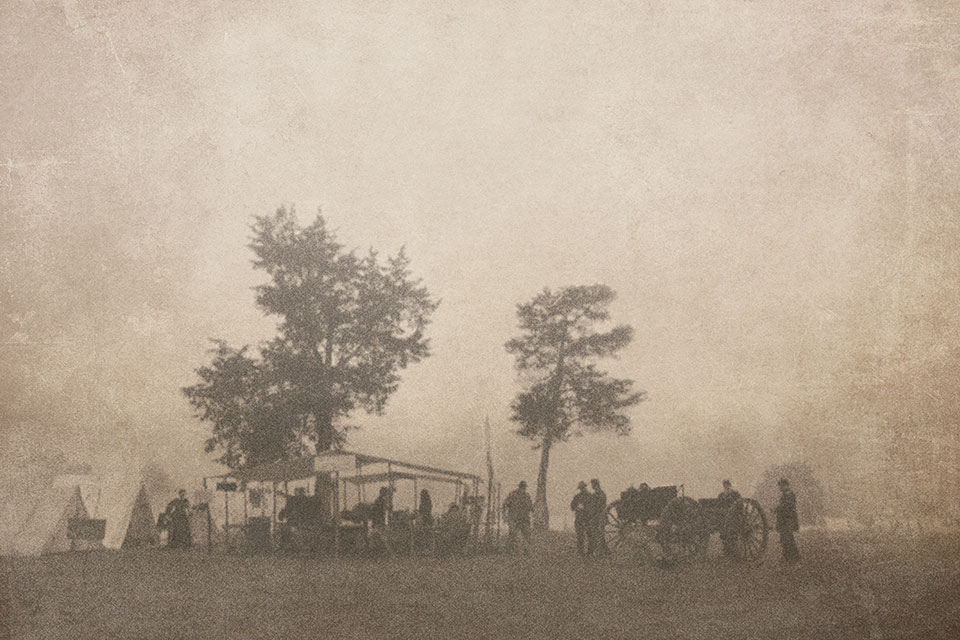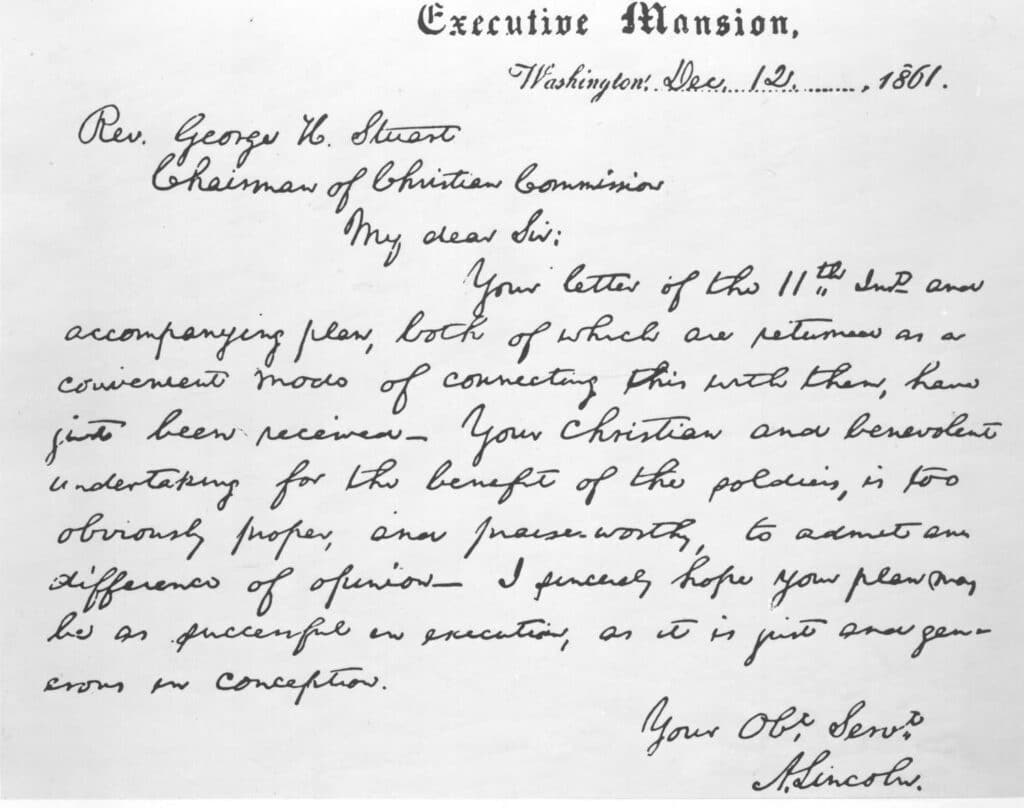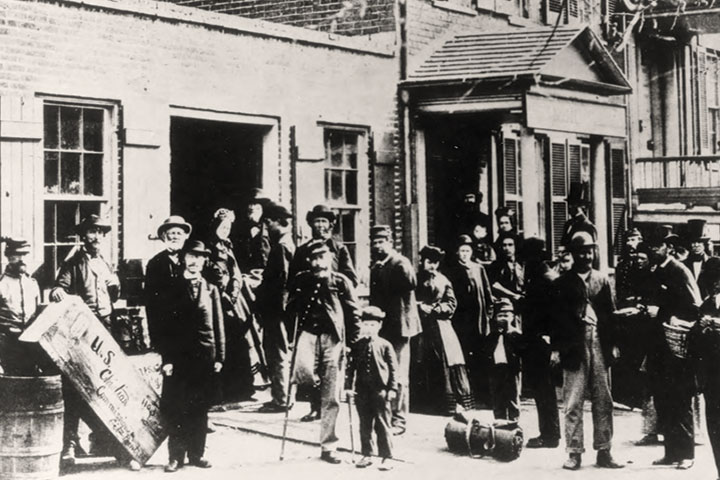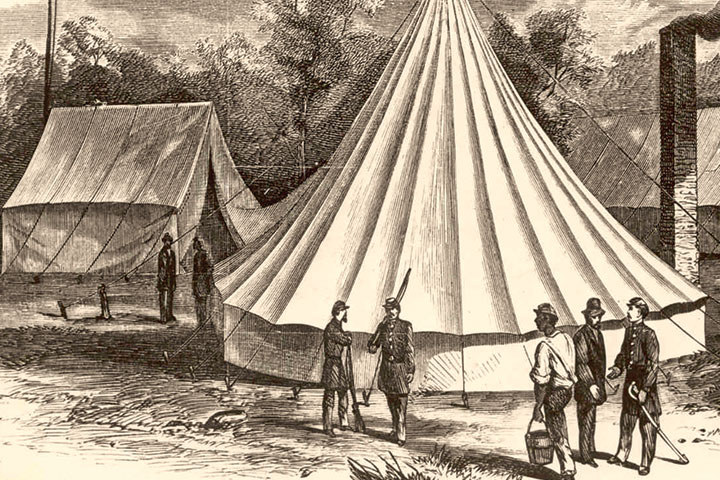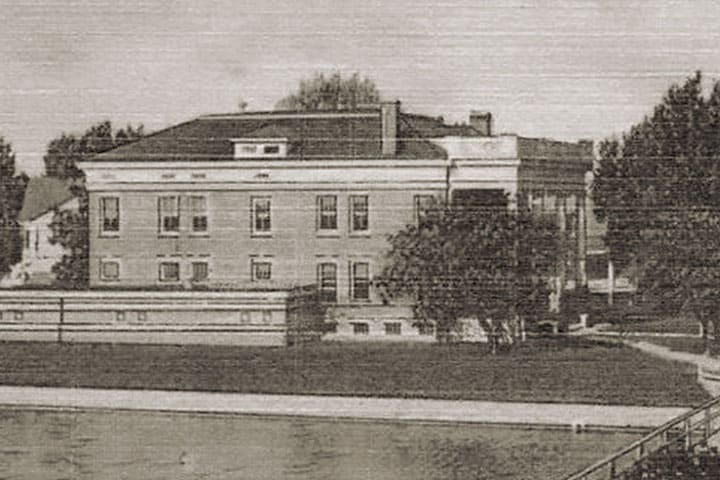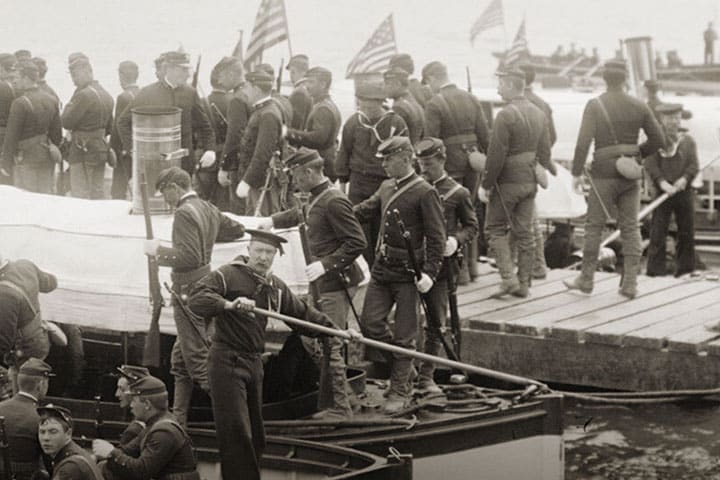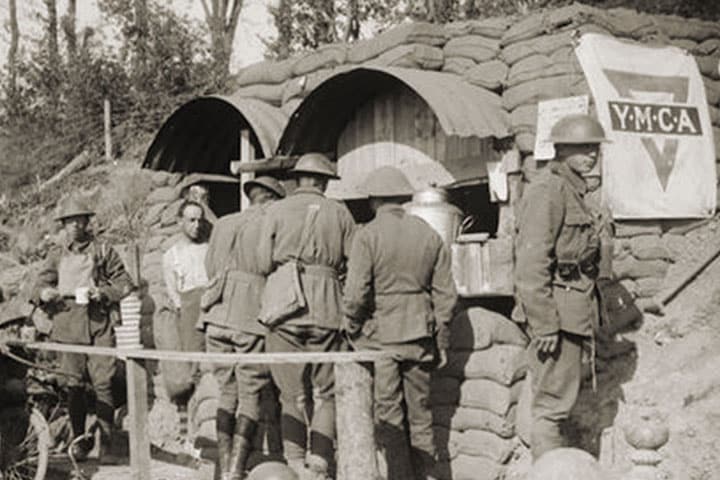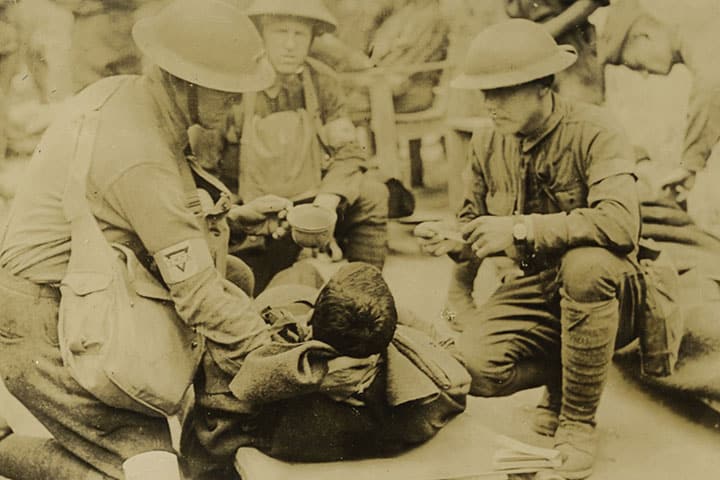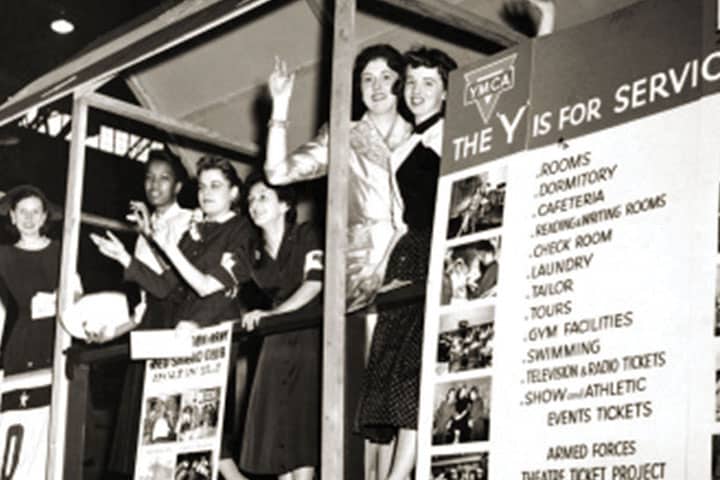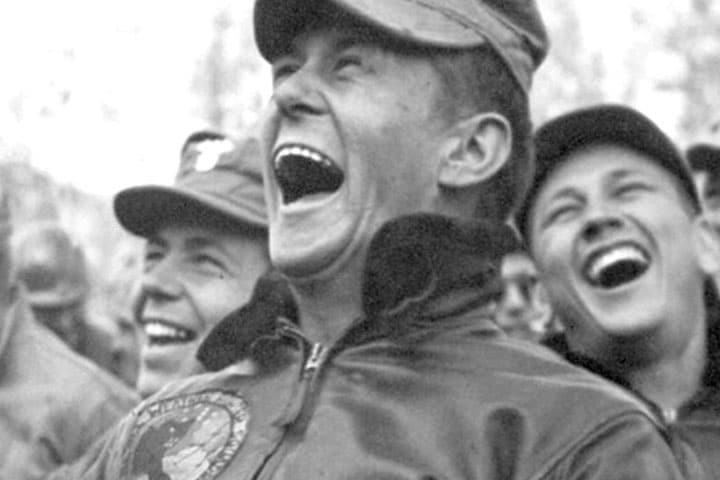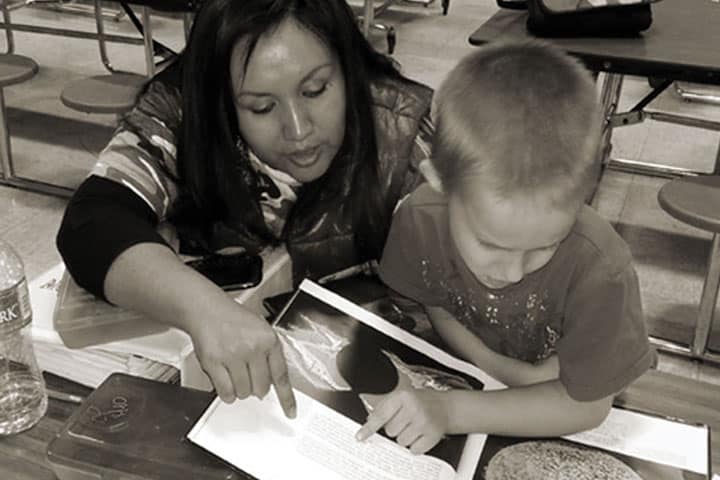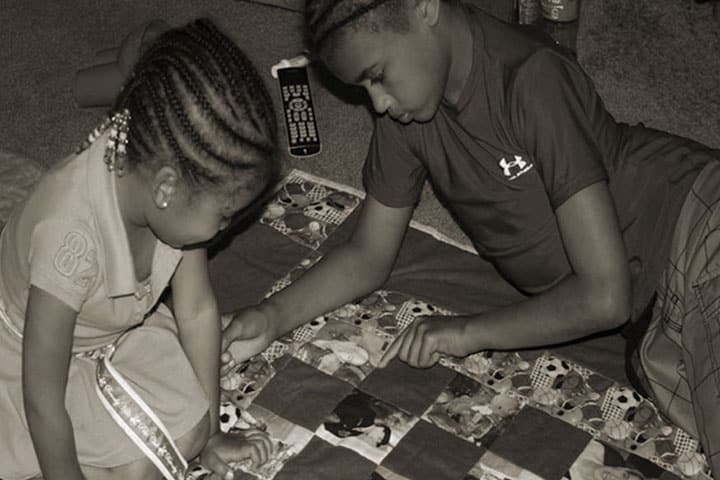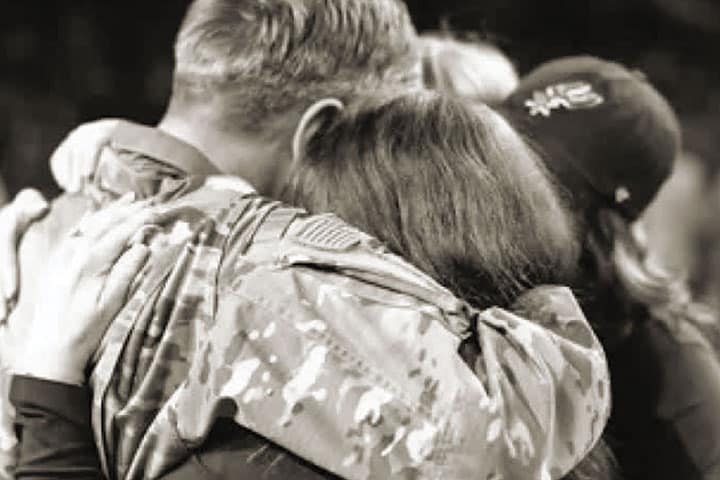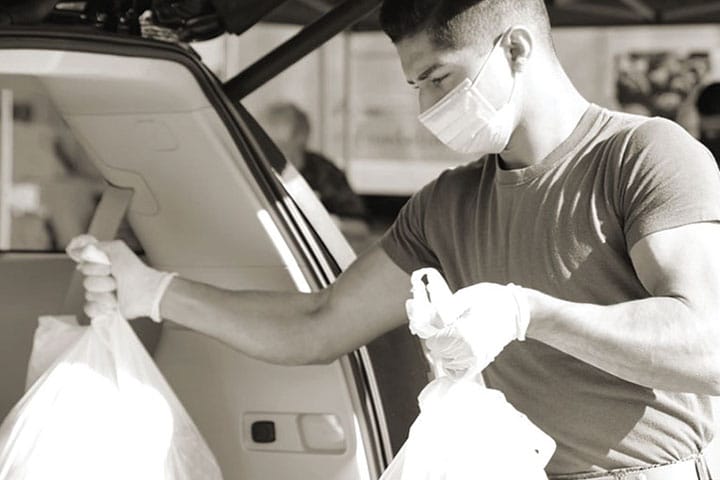During the Civil War, a group of local YMCA members voluntarily provided relief services to American Armed Forces in encampments near the front lines. Within seven months, the movement spread across the country and became the first large-scale civilian volunteer service corps, established as the United States Christian Commission.
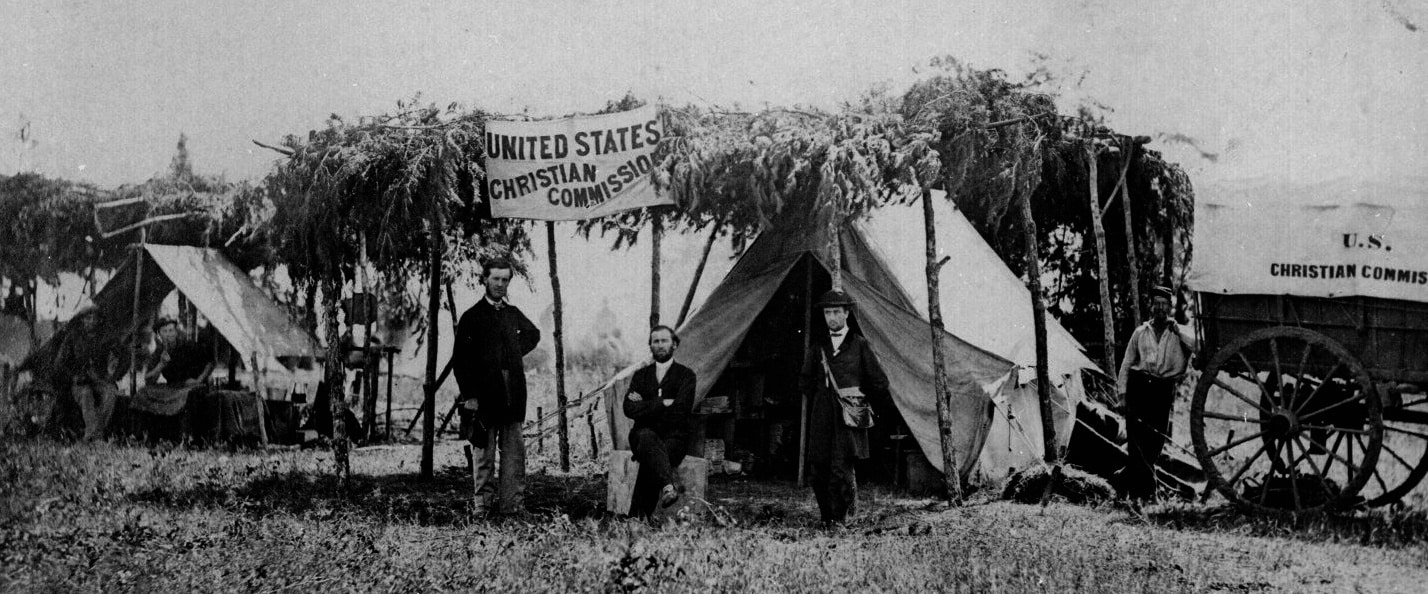
Over 160 Years of Service
The proud heritage of the Armed Services YMCA begins in 1861 during the Civil War when dedicated YMCA volunteers provided relief and comfort to sick and wounded soldiers. Initially, the volunteers provided aid at military encampments located near the front lines, but shortly after, they braved the danger of accompanying soldiers on the battlefields.
Timeline of Events
President Abraham Lincoln took notice and responded to a letter by Chair Reverend George H. Stuart on December 12, 1861. The President wrote the “benevolent undertaking for the benefit of the soldiers” was both “proper and praiseworthy.” He concluded with, “I sincerely hope your plan may be as successful in execution, as it is just and generous in conception.”
YMCA prisoner-of-war work was undertaken during the Civil War, with the YMCA ministering to the needs of both Confederate and Union soldiers. The YMCA distributed 100,000 cases of food, clothing, and medical supplies, and 12 million books, and magazines, with volunteers writing an estimated 90,000 letters for the sick and wounded.
By 1864, the iconic Coffee Wagon, also called the Cooking Wagon, became synonymous with comfort for soldiers. Invented and built by Jacob Dunton of Philadelphia, it is estimated that 90 gallons of tea, coffee or hot chocolate could be every hour and provided food for 400 soldiers. As they said, “a most ingenious and beneficent invention.”
Volunteers served on the battlegrounds with horse-drawn canteens, built and operated special diet kitchens in hospitals, brought books and prefabricated chapels to soldiers and sailors, taught enlisted men how to read and write, maintained a hotel for soldiers on furlough, and provided free meals.
The work for soldiers and sailors during the Spanish-American War was so highly regarded that the YMCA’s central body, following the close of the war in late 1898, established a permanent Army and Navy Committee to give national direction to the work, which resulted in rapidly expanding peacetime development.
In the spring of 1898, the YMCA mobilized in support of the Spanish-American war in cooperation with military leaders, with more than 500 YMCA workers sent overseas. The YMCA moved so quickly that their supplies arrived in Cuba and the Philippines before many of the Army’s own supplies.
Congress authorized the construction of additional YMCA buildings on military installations. Expansion continued over the next 12 years, creating a national service network of 31 Army and Navy YMCAs operating across the country.
When war was declared in 1917, the YMCA immediately volunteered its support and assumed military responsibilities on a scale that had never been attempted by a nonprofit, community-based organization in the history of our nation and would never be matched again. In total, the YMCA conducted 90% of the welfare work among the armed services in Europe during the war.
Examples of the YMCA’s operations during WWI included 4,000 huts and tents for recreation and religious services; 80,000 educational scholarships provided to veterans of the war; 1,500 canteens and exchanges; 286 casualties of volunteers working under the YMCA banner; and 319 citations and decorations awarded to YMCA staff and volunteers.
Many of the innovative projects created by the YMCA during WWI were destined to become institutionalized, including morale, welfare and recreation; overseas “exchanges;” educational scholarships; and R&R for combat-weary soldiers.
In the tradition of its Civil War roots, the YMCA continued to undertake extensive prisoner-of-war work, providing supplies and aid to over five million prisoners of war over the course of WWI.
Independent of the USO, the YMCA once again undertook a massive humanitarian task similar to the one it had accomplished in World War I. However, YMCA Prisoner-of-War work in World War II was far more extensive and of greater magnitude and duration than that of World war I.
President Franklin Roosevelt asked the YMCA to take the lead in mobilizing military support during World War II. The YMCA, YWCA, National Catholic Community Services, Jewish Welfare Board, Salvation Army, and National Travelers Aid Association came together and formed the United Services Organizations (USO).
During WWII, the War Prisoners Aid Program involved POW camps in 33 countries and included supplies sent to 20 other nations where conditions precluded personal visits by YMCA War Prisoner Aid staff.
The USO deactivated, and the YMCA’s Army and Navy Department immediately filled the gap in social services for military personnel, changing its name to the YMCA Armed Services Department. One year later, the YMCA Armed Services Department would assume responsibility for 26 former USO branches and establish work overseas.
The USO reactivates during the Korean War, with the YMCA serving as its major operating agency, continuing operations through the Vietnam conflict.
The YMCA continued providing its services to the military community under the USO umbrella through the years of the Vietnam conflict. In the mid-seventies, however, the YMCA’s National Board of Directors determined that its work with the USO had been successfully completed and it should resume delivering its unique, direct services to the military within its own organizational structure.
The establishment of an all-volunteer armed services after the Vietnam conflict brought new demands to organizations serving young military people. In addition, the number of young families in the military was increasing and the YMCA programs needed to reflect this change. Following the YMCA’s decision to focus on direct services, the USO asked the YMCA to assume responsibility for 12 USO centers in the United States.
The Department of Health and Human Services and the Department of Defense asked the YMCA Armed Services Department to develop and operate a national center called the Military Family Resource Center (MFRC). By 1983, the program was deemed successful, becoming a permanent part of the Department of Defense.
The YMCA Armed Services Department reorganized as the Armed Services YMCA of the USA, and chartered as a National Member Association of the YMCA of the USA in 1983. The Armed Services YMCA is subsequently designated as the YMCA’s representative for the Department of Defense.
Originally started as a gang prevention program, Operation Hero is created at Marine Corps Base Camp Pendleton. The program was quickly redirected to address the stressors experienced by the children of service members caused by frequent moves, deployments, disruption of living circumstances, and the return of a parent experiencing the “un-seen” wounds of war.
Operation Kid Comfort begins at the Fort Bragg Armed Services YMCA to help provide comfort to the children of service members who were deployed overseas during the War on Terror.
The first Kid Comfort quilt was created by a Fabric Artist whose grandchild began hiding pictures of her deployed parent under her bed. Recognizing her grandchild’s need for a tangible connection to her deployed parent, she created a photo quilt to help ease the pain of separation.
The program was quickly adopted by other ASYMCA branches to help military children all over the United States.
Seeing the need to reconnect young service members with their families back home, Jack Daniel’s partners with the Armed Services YMCA to provide travel funding to junior enlisted military members and their families to travel home for the holidays. Since its inception, the program, Operation Ride Home, has sent over 8,500 individual service members home when it matters most.
A global pandemic leads to major lockdowns throughout most civilian sectors while military personnel remain largely at their posts and on mission. True to their long history of rapid response to changing events, the Armed Services YMCA steps into the breach to help fill gaps in food security, child care, and early education caused by school closures and supply chain interruptions. The Armed Services YMCA’s rapid response to the COVID-19 Pandemic resulted in over two million pounds of food distributed to military families suddenly faced with a single income; 4,000 children served by emergency childcare for essential workers; and over 48,000 points of service for military children’s educational and virtual learning needs.

